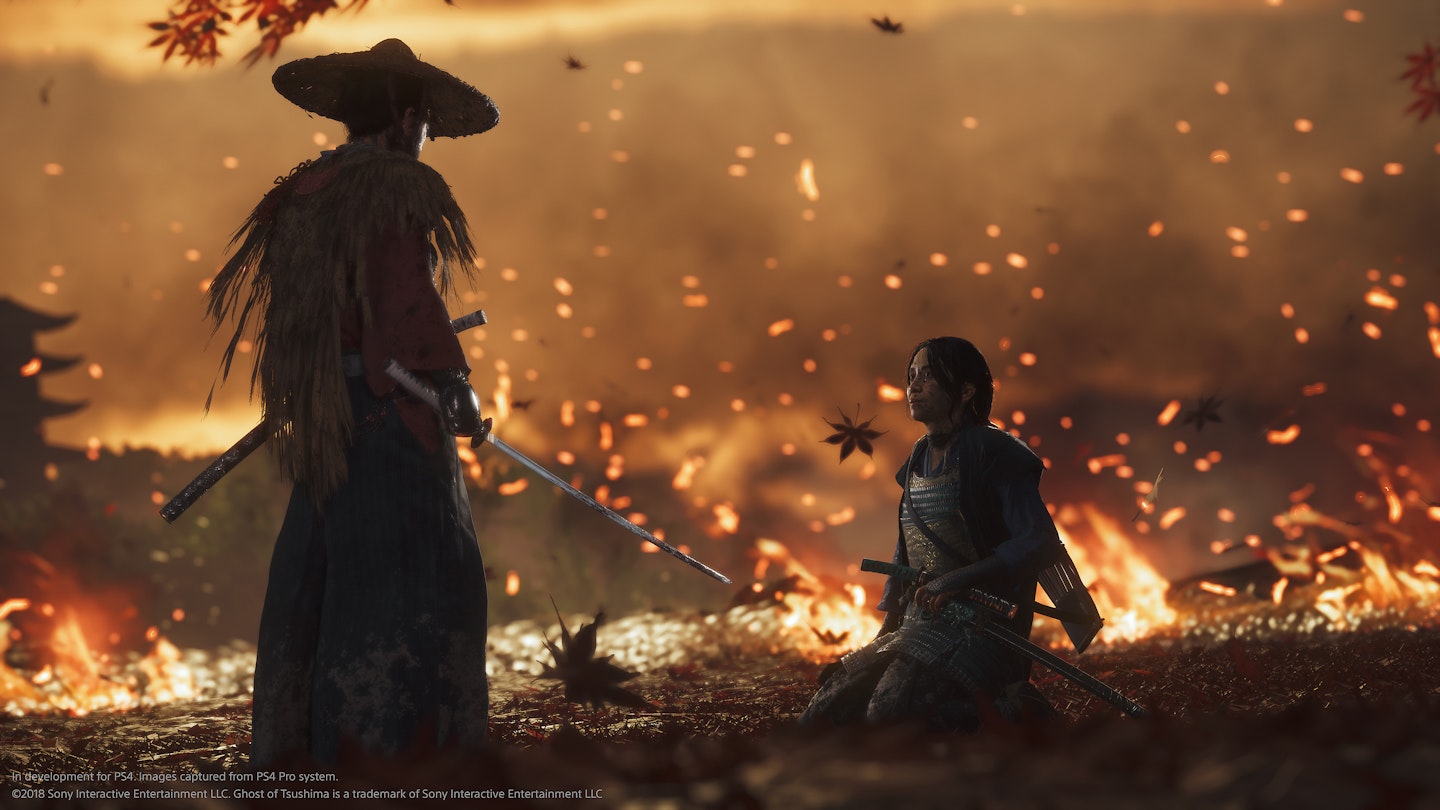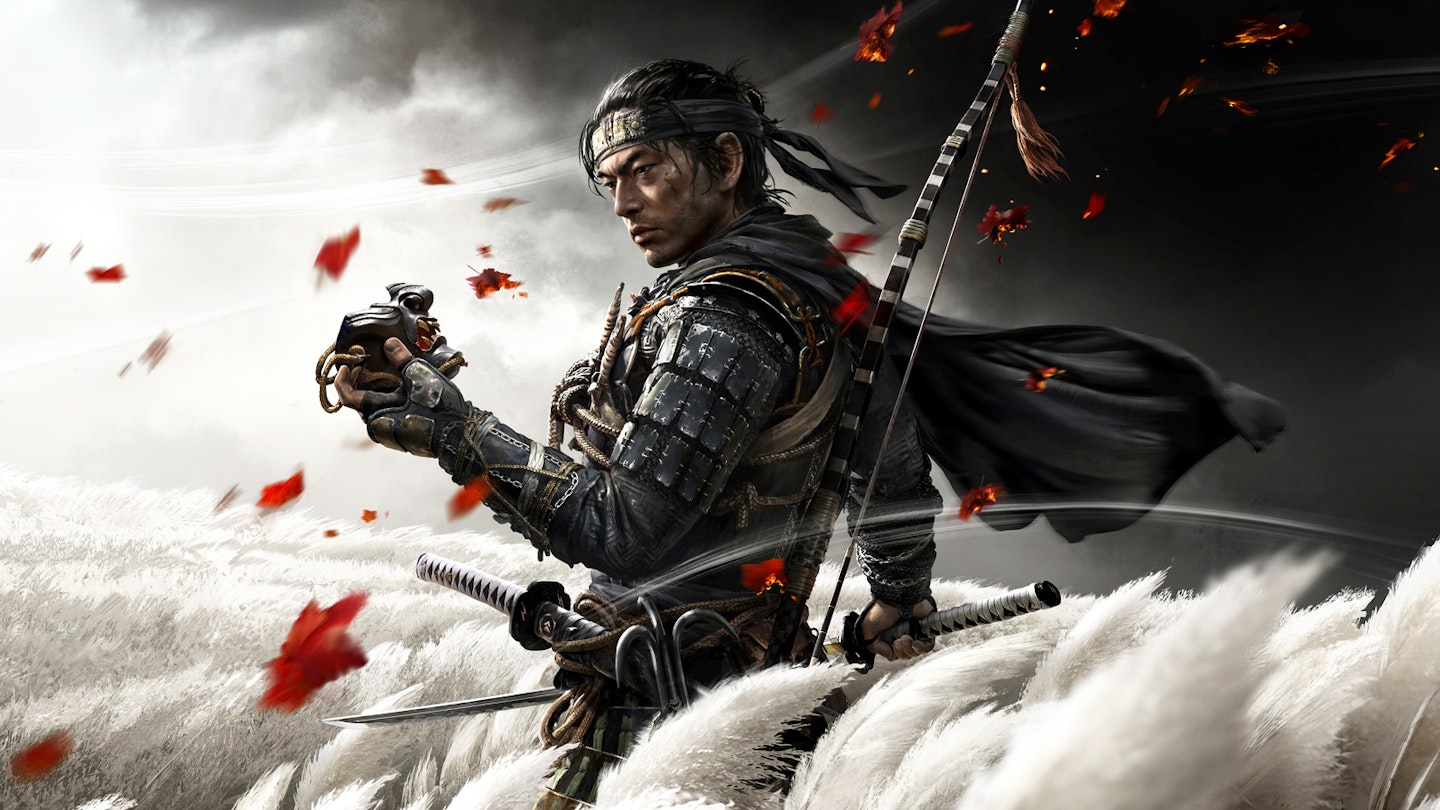The first thing you'll hear in Ghost of Tsushima won't be the clash of katana blades, but the sound of a calming breeze. Delivered through the DualShock 4's integrated speaker, the soothing wind immediately immerses you in the action-adventure's beautiful open-world.
More than a mere audio gimmick though, the effect is a multi-pronged part of the overall experience. Swiping the controller's touchpad not only triggers the sound, but sees feudal Japan's varied, visually-stunning foliage react to the input. Additionally, blown leaves, trees, and grass – as well as gust trails – gently guide you to your chosen destination.

Impressively, this nuanced way in which the wind is incorporated into the gameplay and presentation extends to nearly every element of Sucker Punch Productions' ambitious samurai tale – from the storytelling and mission structure to its progression systems and stealth-action combat. The latter will be especially appreciated by anyone growing tired of the increasingly prevalent soulslike genre; besting a boss – without dying a dozen or so times first – feels like a refreshing, empowering change of pace.
While Ghost of Tsushima provides a welcome reprieve from the player-punishing formula defining many contemporary blade-based action-combat games, it's no mindless, button-mashing affair. On the contrary, wielding protagonist Jin Sakai's katana offers a deep, layered experience, relying as much on strategic dodging and parrying (both of which sport their own skill trees) as carving through the massive Mongol army
Bloodying the battlefield is an endlessly engaging, always evolving blast.
Toss in multiple, play style-molding items and perks – combat stances, special abilities, ranged weapons, ammo types, armor, passive charms, and much more – and bloodying the battlefield is an endlessly engaging, always evolving blast. Building your ultimate samurai badass, by unlocking and upgrading these various complementing items, is half the fun —don't be surprised if you find yourself spending more time chasing character-progressing goodies than hunting critical path objectives.
Of course, the game's absorbing story, engaging quest structure, and excellent pacing also deserve credit for making almost every task feel rewarding. Whether clearing a sprawling Mongol camp on the path to saving your people or tailing an adorable fox through the forest, you'll never feel like you're wasting your time.
The fact Sucker Punch has forgone the usual icon-cluttered map in favor of a far more organic approach to uncovering and tackling objectives (like literally going where the wind takes you) further supports this meaningful progression; regardless of how many shrines you visit or haiku you collect, you'll never suffer that sense of arbitrarily ticking items off a checklist.

While Ghost of Tsushima is easily the developer's best effort (which speaks volumes given their work on the Sly Cooper and inFamous franchises,) it's not entirely flawless. The solid pacing is occasionally slowed by fetch quests, while the engrossing combat sometimes falls victim to a camera that has trouble cooperating indoors. These are small prices to pay, however, for the opportunity to follow the path of the samurai... or the Bushido-breaking Ghost.
If The Last of Us Part II's dark tone and divisive reception left you craving a more “fun,” fantasy-fulfilling palate cleanser – one perhaps better suited to ushering out the PlayStation 4 on a celebratory note – Ghost of Tsushima fits the bill like a comfy kimono.
